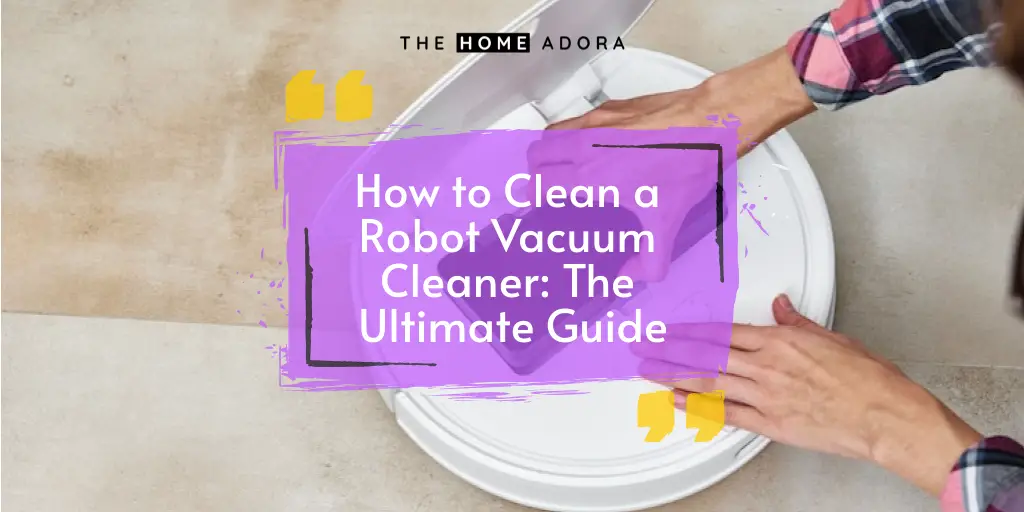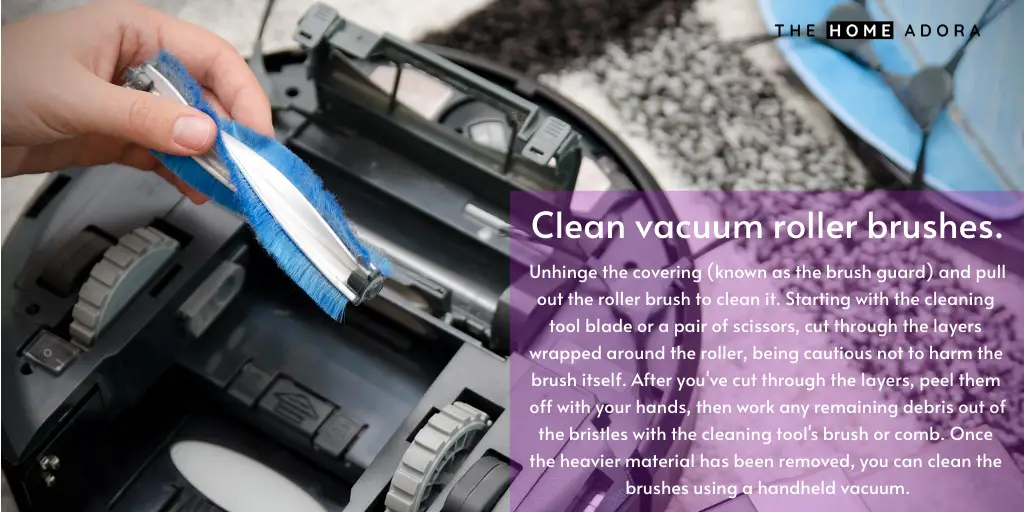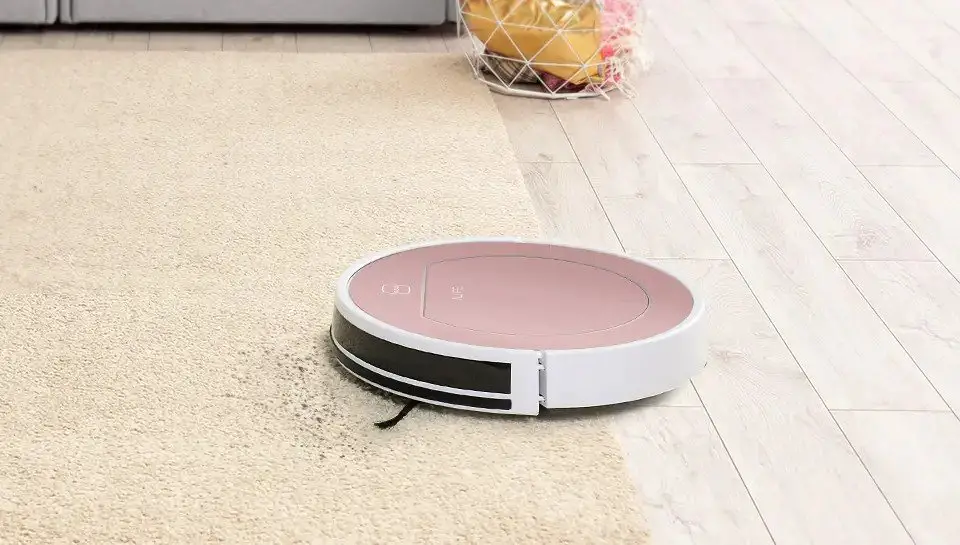Anyone with a robot vacuum cleaner knows that, like all machines, they need to be cleaned every once in a while to keep them on their best behavior. But how do you go about cleaning a robot vacuum effectively?

Robot vacuums have a lot of moving parts that need to be looked after. Maintenance is quite simple, and all you need to remain on top of it is a decent routine. Most robot vacuums come with a cleaning tool that is a combination of a blade, comb, and brush. With a microfiber cloth in hand, you’re ready to go. Read on to learn how to clean a robot vacuum and all of its parts, how often to do so, and which parts may need to be replaced.
Cleaning a Robot Vacuum
Turn off your robot vacuum before you begin to avoid accidentally activating any buttons and causing the machine to beep in frustration.
What is sucked into the vacuum is collected in dustbins? Suction is hampered by a full trashcan, thus it should be emptied after each usage. Allow the machine to run again even if the bin isn’t full; permitting the machine to run again risks the bin partially filling up during the next cleaning, making the rest of the cycle less efficient. Because hair quickly fills the bin, some people—especially pet owners—might find it advantageous to empty it in the middle of a cycle.
Dustbins are usually found on the machine’s back underside or at the top center. To avoid trash falling from the entrance, release the dustbin and draw it straight out. Empty the contents of the dustbin into a garbage can. If the dumpster has any extra features, such as an anti-tangle comb, make sure to clean them as well. If anything extremely unpleasant is caked on, dustbins may usually be cleaned; just make sure all filters are removed before getting it wet.
When the robot is docked, some newer models have a self-emptying capability that clears the garbage. Although you must empty the docking station between uses, the trashcan does not require cleaning.
Clean vacuum roller brushes.
Roller brushes pick up debris on the floor and help the vacuum’s dustbin suction. Because hair, thread, and other debris cling to the roller brush, you should clean it after every few uses—especially if you have dogs or residents with long hair.

Unhinge the covering (known as the brush guard) and pull out the roller brush to clean it. Starting with the cleaning tool blade or a pair of scissors, cut through the layers wrapped around the roller, being cautious not to harm the brush itself. After you’ve cut through the layers, peel them off with your hands, then work any remaining debris out of the bristles with the cleaning tool’s brush or comb. Once the heavier material has been removed, you can clean the brushes using a handheld vacuum.
If the cavity and brush guard of your roller brush appears to be dirty, clean them down before reinstalling the brush. To properly attach the roller brush and the machine, look for an arrow or similar indication on each of them. After that, reattach the brush guard.
To maintain the machine running smoothly, both brushes and brush guards should be replaced. Rollers should be replaced every 6 to 12 months, and guards should be replaced when the rubber strip wears out, according to the manufacturer’s recommendations.

Clean robot vacuum sensors.
Sensors are essential components that assist the robot in navigating areas and avoiding slipping downstairs. If your vacuum seems to be bumping into things more than usual, it’s time to clean the sensors. Sensors can be found on the machine’s sides and bottom; check the product manual for your robot vacuum to see where they’re all positioned. They may be swiftly retouched with a microfiber cloth. To remove harder stains, moisten the microfiber cloth with water and wipe; avoid using a cleaning solution because abrasive cleansers can damage the sensor cover.
Clear the debris from the wheels.
The vacuum is propelled over the floor by wheels in the center, while the machine is maneuvered by a swivel ball caster wheel at the front. Wheels usually don’t require much attention, but it’s a good idea to check for accumulation to keep the vacuum running smoothly. Tweezers can aid in the removal of debris lodged between the wheel and the machine’s body; this is particularly crucial for the caster wheel. If your wheels appear to be dirty, wipe them off with a moist cloth to avoid tracking dirt about.
Dust charging ports.
The vacuum and docking station are connected for charging via metal connections on the bottom of the vacuum and the docking station. Simply wipe with a microfiber cloth, especially if you’re having trouble attaching the vacuum to the base or experiencing charging difficulties regularly.
See more: How to Clean a Rug at Home-The Ultimate Guide
Conclusion
Cleaning your robot vacuum can be tricky, but it’s important to keep it in good condition so it can continue to clean your floors effectively. In this article, we have shown you how to clean a robot vacuum properly so it can stay in good condition and clean your floors effectively.
Thanks for reading!

